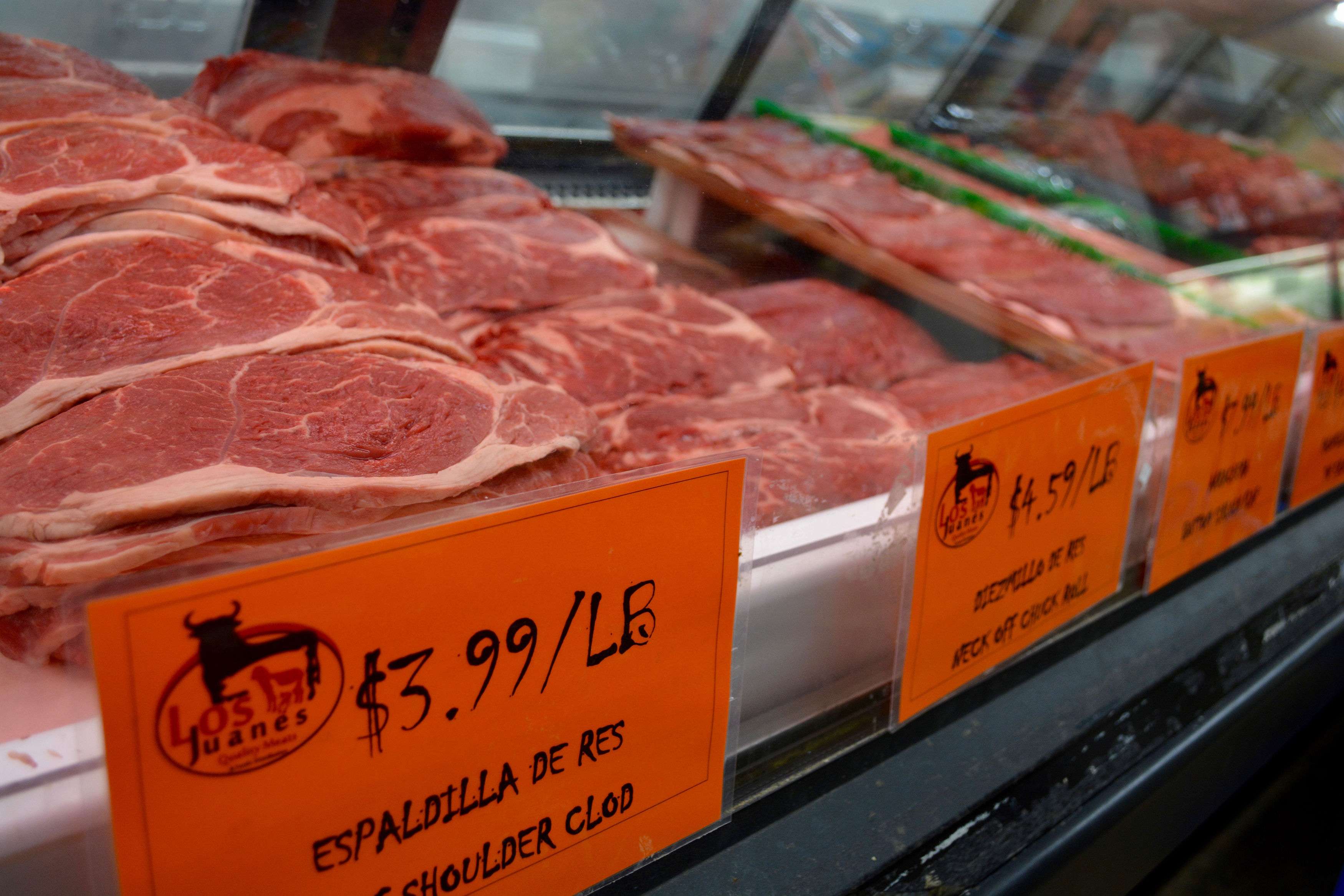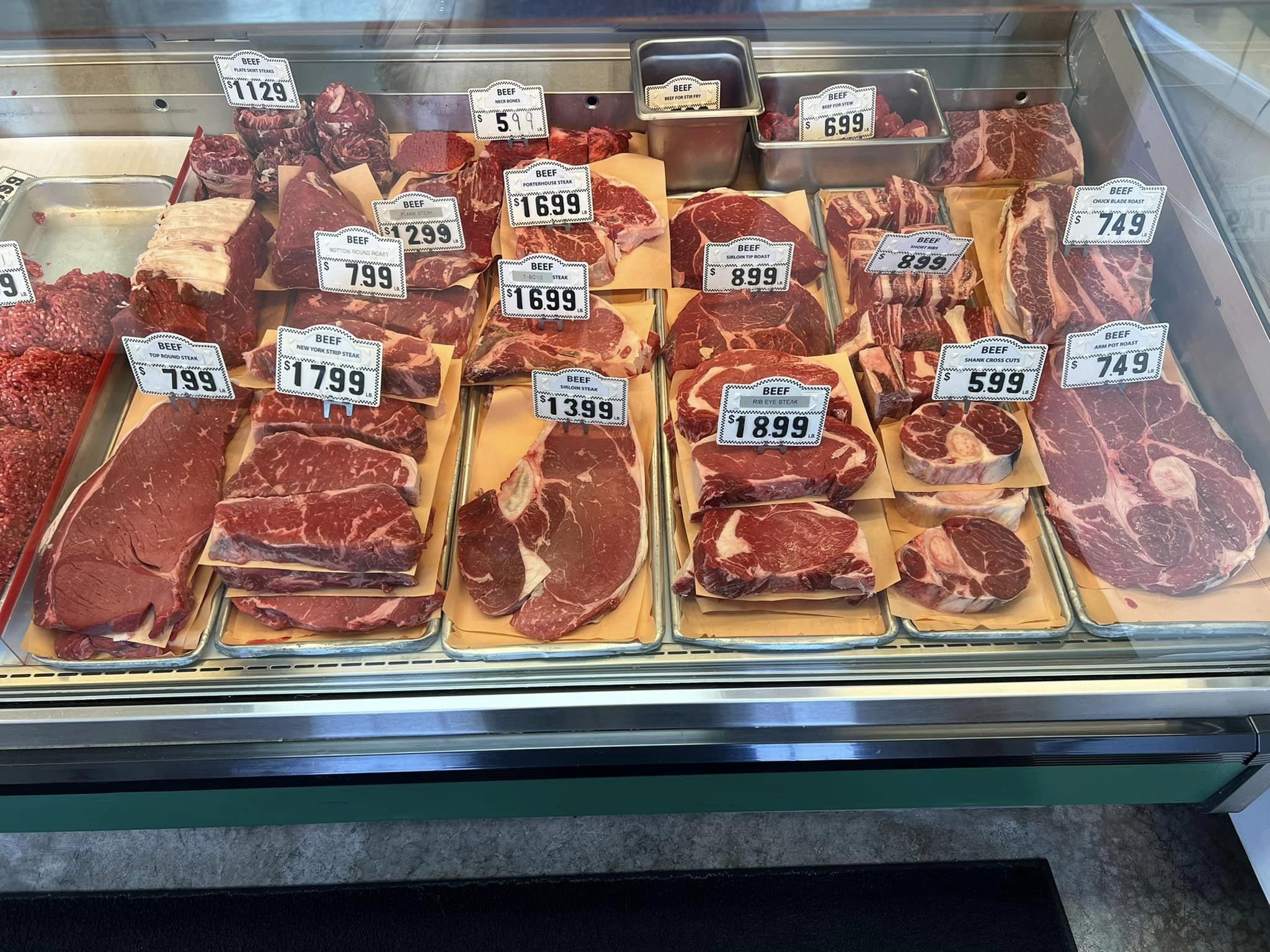What Makes Bagley Farms Meat Market Edwardsville IL Attract Attention for Meat Lovers
What Makes Bagley Farms Meat Market Edwardsville IL Attract Attention for Meat Lovers
Blog Article
Reveal the Art of the Butcher's Cut in a Modern Meat Market
In the ever-evolving landscape of contemporary meat markets, the butcher's cut has actually transcended its traditional roots, merging olden workmanship with modern methods. Today's butchers are not simply processors of meat; they are experienced craftsmens that stress sustainability and moral sourcing. Their knowledge in picking and preparing cuts tailored to certain cooking needs offers an unmatched dining experience. What really sets the modern-day butcher apart is their capacity to create a much deeper connection between customers and the origins of their meat. Just how do these masters equilibrium tradition with innovation, and what effects does this have for the future of meat usage?
Development of Butchery Techniques
The advancement of butchery techniques mirrors a rich tapestry of technology and adaptation driven by advancements in innovation, changes in customer demand, and a much deeper understanding of meat science. Historically, butchery was a craft gave through generations, with techniques developed over centuries to optimize yield and taste. Nevertheless, the commercial transformation introduced mechanization, changing standard practices and making it possible for massive handling.
The mid-20th century saw butchery methods better refined by clinical insights right into muscular tissue biology and meat aging, improving both tenderness and taste. Technologies like vacuum product packaging and refrigeration extended product shelf-life, permitting butchers to diversify offerings and enhance quality assurance. This period additionally noted the rise of specialized equipment, such as band saws and meat slicers, which boosted accuracy and performance in meat processing.

The 21st century has introduced digital modern technology right into the butchery world. Digital systems currently aid in tracking animal provenance and optimizing cuts to meet particular customer preferences. Additionally, a revival in artisanal butchery has emerged, blending traditional abilities with modern-day expertise to provide to customers looking for moral and lasting meat choices. This development highlights a dynamic interplay between tradition and development, meeting modern demands while preserving the craft's heritage.
Comprehending Meat Cuts
Recognizing the ins and outs of meat cuts is important for both butchers and customers seeking quality and worth. For butchers, precise cuts show ability and regard for the craft, guaranteeing minimal waste and optimum yield.

Comprehending muscle mass structure is critical; muscular tissues utilized extra regularly by the pet often tend to be harder and are best matched for slow-moving food preparation methods, while less-used muscle mass, like those discovered in the loin, are much more tender and ideal for grilling or roasting. Familiarity with these differences equips consumers to make informed selections, boosting their cooking undertakings.
Choosing Top Quality Meat
Picking the appropriate meat entails even more than just picking an aesthetically enticing item from the display. bagley farms click here to read meat market edwardsville il. The art of picking quality meat requires a critical eye and understanding of details features that represent quality and excellence. First of all, focus on the shade; beef needs to have a bright, cherry-red hue, while lamb ought to exhibit a soft pink tone, and pork a pale pink. This shows the meat is fresh and hasn't been revealed to oxygen for also lengthy.
Second of all, take into consideration the marbling, which refers to the white flecks of fat within the muscle mass. Correct marbling is a key sign of inflammation and taste, as it thaws during food preparation, boosting the meat's juiciness. Remember, higher marbling often associates with premium top quality cuts, such as USDA Prime.
Structure is an additional crucial aspect; meat should really feel strong to the touch, not slimy or excessively soft. Additionally, bear in mind the find out this here aroma. Fresh meat should have a clean, neutral odor, totally free from any type of sour or off-putting odors.
Pairing Cuts With Cooking Methods

On the other hand, tougher cuts like brisket and chuck roast are abundant in collagen, which breaks down right into gelatin when prepared gradually. These cuts are suitable for braising or sluggish roasting, enabling the meat to soften in time and establish deep, complex flavors. Cuts such as brief ribs and pork shoulder get on well with slow-cooking methods, where expanded cooking times change their robust textures into delicious recipes.
Lamb shanks and oxtail, which require long term food preparation to tenderize, are best prospects for cooking or sluggish simmering. These approaches coax out abundant, their explanation passionate tastes while keeping dampness. By understanding the distinct attributes of each cut, chefs and home cooks alike can raise their culinary creations, making sure each meal is both satisfying and memorable.
The Butcher's Role Today
Browsing the developing landscape of the contemporary meat market, the butcher's role today extends beyond plain preparation of cuts. Contemporary butchers are cooking craftsmens, teachers, and advocates for lasting techniques.
In enhancement to crafting precise cuts, butchers now involve straight with customers, supplying cooking suggestions and tailoring selections to suit private needs and choices. Their proficiency in meat aging, marbling, and flavor accounts encourages consumers to make educated choices, improving their culinary experiences. This tailored service exhibits the butcher's developing duty as a trusted expert in the kitchen.
In addition, butchers are critical in decreasing waste, utilizing whole pets to create varied items such as sausages and supplies. This thorough approach not just respects the animal yet additionally lines up with contemporary sustainability objectives. In this way, the contemporary butcher personifies both tradition and advancement, adjusting to an ever-changing market while preserving the creativity and honesty of their craft.
Conclusion
The modern butcher's craft delicately weaves conventional strategies with modern developments, highlighting lasting techniques and moral sourcing. Proficiency in recognizing diverse meat cuts and quality signs encourages butchers to provide informed referrals, aligning specific cuts with optimal cooking approaches. This knowledge not only elevates culinary experiences yet additionally reinforces the link in between customers and the origins of their food. By honoring historic techniques while accepting contemporary demands, the butcher's role continues to be essential in today's innovative meat market (bagley farms meat market edwardsville il).
Report this page